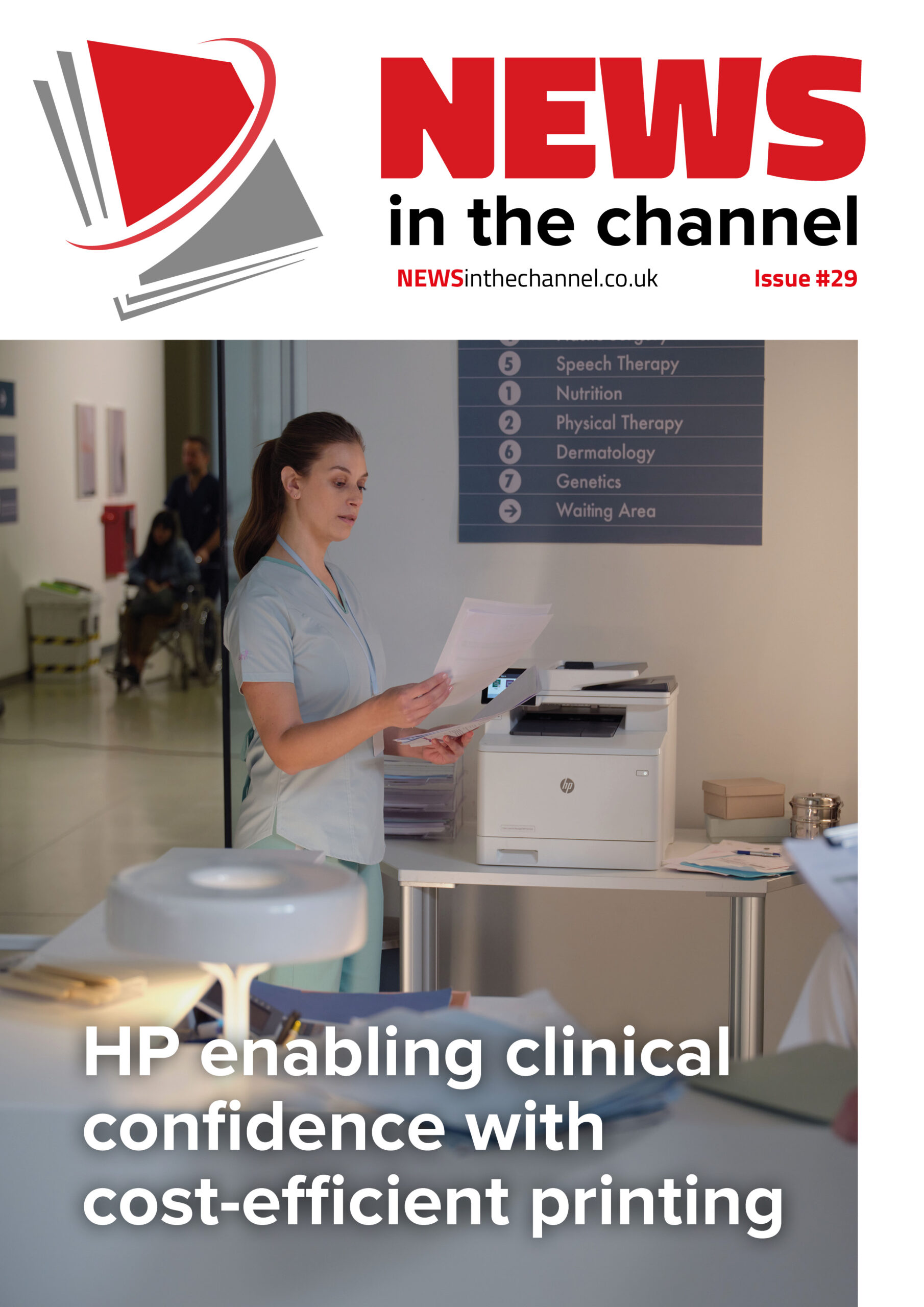As environmental concerns grow, more businesses are looking to recycle devices at the end of life and buy new products containing recycled materials, meaning that there are growing opportunities for resellers in the circular economy.
With 2024 being the hottest year on record, according to data from the World Meteorological Organization, it is perhaps unsurprising that sustainability is becoming increasingly prominent in the strategy of many businesses, with the circular economy becoming more popular as they look to cut their carbon emissions and increase the amount they recycle to help mitigate the effects of climate change.
As Mary Jacques, executive director, Global ESG & Regulatory Compliance at Lenovo, notes, a recent study by CapGemini found that sustainability moved to the forefront of business strategy this year. “It found 62% of business leaders planning to increase their sustainability investments,” she says.
“Enterprises are becoming more aware of their environmental impact, not just in operations but across supply chains and product lifecycles. The circular economy is emerging as a key framework, helping companies reduce waste, improve resource efficiency and align with net-zero goals.
“Interest in the circular economy is accelerating across industries. While larger enterprises and those in tech, manufacturing and retail may be leading the charge, circular practices are becoming more accessible for businesses of all sizes.”
Nancy Powell, HP UK+I sustainability lead, agrees that awareness of the need for businesses to be more sustainable is growing steadily across the board. “Sustainability is no longer seen as a side initiative, it’s becoming central to how businesses define long-term value,” she says. “We’re seeing procurement teams, IT decision-makers and board-level stakeholders increasingly ask about circularity and environmental impact, especially when it comes to hardware lifecycle. The conversation has shifted from cost and efficiency alone to include responsible consumption and end-of-life planning.
“While large enterprises have historically led the charge, especially those with robust ESG frameworks, we’re now seeing mid-sized and even smaller businesses taking circularity seriously, often driven by client expectations or internal values.”
Across industry
Steve Dickinson, head of supply chain at Espria, says that interest in the circular economy is growing across all kinds of industries and business sizes. “With eco-conscious green targets rolling out across all industries, IT operators are faced with a need to go green without overspending,” he adds. “This is particularly clear for sectors like manufacturing, retail and IT, where sustainability initiatives more often align directly with operational needs and consumer expectations.
“Larger corporations are already implementing circular initiatives, partnering with other organisations to create circular solutions, such as product-as-a-service models and shared consumption. Similarly, SMBs are adopting rental services or shared consumption models. Ultimately, adoption is driven by understanding end-user needs and providing teams with the tools they need without overprovisioning devices.”
Zach Bennett, Microsoft Teams MVP and principal architect at LoopUp, notes that the growing interest in the circular economy within the tech device sector. “Businesses are becoming more aware of sustainability issues, particularly in reducing electronic waste and extending device lifecycles,” he says.
“This interest is reflected in a rising number of multinational clients interested in reducing the physical plastic handset devices on their users’ desks in favour of soft clients. Microsoft Teams, for example, is a popular alternative to wasteful plastic devices as it enables users to reduce waste by reusing legacy analogue equipment.”
Business sense
Mike Barron, UK managing director, SYNAXON, adds that it isn’t just about the environment. “Being more sustainable makes sense for businesses, as it lowers their costs,” he says. “Many, if not most businesses now have their own ESG goals and that’s going to drive greater interest in lifecycle management and the circular economy.
“The question perhaps is how quickly they will be compelled to adopt more sustainable practices. The UK government is encouraging SMBs to commit to halving their greenhouse gas emissions by 2030 and achieving net zero by 2050. But how many SMBs are taking meaningful action? I think our industry may need to come up with a compelling value proposition to bring more businesses into the circular economy for IT.”
Manufacturer response
Manufacturers are increasingly responding to this growing interest in the circular economy. “Many manufacturers are revisiting the design process from the ground up, replacing adhesives with mechanical fasteners to enable disassembly, using more recycled content in production, and building repairability into the engineering brief,” Nancy says.
“At HP, for example, our teams are guided by circular design principles and participate in repairability scoring schemes. We’re also expanding programmes like Planet Partners and HP Renew to extend product lifecycles and maximise material recovery.”
Mary agrees that manufacturers are rethinking product development from the ground up. “They are integrating sustainability into every stage of the product journey – from sourcing raw materials to end-of-life management,” she says. “Dematerialisation – using fewer resources while enhancing durability and repairability – is fundamental as a design philosophy for products and packaging. To reduce dependence on primary raw materials, which can be significant contributors to emissions, many companies are shifting towards recycled and renewable materials for products and packaging.”
Mary adds that sustainable packaging is evolving, with a push to eliminate plastics entirely and switch to renewable, compostable or recyclable materials. “Meanwhile, more manufacturers are using post-consumer recycled content in devices themselves, aiming to create closed-loop systems that significantly cut down on virgin material use and waste,” she says.
“Future trends point to greater use of modular designs, recyclable or reusable materials and components, simplified disassembly, and increasing take-back schemes for material recovery.
“For example, at Lenovo we have worked to help reduce the electronic waste for many years, and our Asset Recovery and Certified Refurbished services are a key part of this. We also have partnered with iFixit to evaluate the repairability of our ThinkPad models and have published almost 200step-by-step self-repair guides, with more on the way.”
Steve adds that manufacturers are taking significant steps by working with IT leaders on their sustainability strategy directly. “Utilising remanufactured or refurbished devices across organisations can reduce the average carbon impact of devices, especially when coupled with mindful WEEE,” he says. “Energy-efficient devices aid in helping businesses scale, as well as manage CO2 emissions and power consumption, reducing operating costs.
“By understanding user capability versus requirement, manufacturers can avoid creating workflow bottlenecks while reducing unnecessary resource use. Modular designs that enable easier repair or refurbishment also play a key role in extending device lifecycles and reducing e-waste.”
Reseller role
With interest growing in the circular economy, resellers have a great opportunity to help customers to achieve their sustainability goals. “Resellers play a critical role by offering refurbished devices that extend product lifespans and reducing the demand for new manufacturing,” says Steve. “Fundamental to this is understanding the requirements of the customer and their end user, while also educating organisation decision-makers on sustainable consumption initiatives that work in tandem with driving down business costs.”
Mary says resellers are uniquely positioned to support circular economy principles. “They can add value by offering services such as repair, refurbishment, trade-ins and recycling programs,” she says.
“Given that less than one quarter was documented as having been properly collected and recycled in 2022, any action individual consumers can take to repair or recycle their old tech responsibility is a positive contribution to a more sustainable future. Enhancing product repairability – through design features that simplify component access and comprehensive repair guides – empowers users to keep devices in use longer, which reduces e-waste.”
Fostering long-term relationships
The circular economy can also help resellers build longer-term relationships with customers as they guide them through the lifecycle of a device.
“The circular economy fosters long-term relationships by shifting focus from transactional sales to lifecycle management,” says Steve. “Resellers guide customers through device use, refurbishment, recycling and resale stages for ongoing value. As consumers are increasingly favouring brands that demonstrate environmental responsibility. But similarly, creating longer-term relationships helps ensure better, more tailored recommendations on device procurement and licensing.”
Mike adds that if resellers can play a more active role in shaping their customer’s approach to sustainability and managing the lifecycle of IT products, they have a much better chance of becoming a trusted advisor and partner, rather than a one-time seller. “There are relevant services that they can offer, such as device as a service and they can also help customers reduce their costs by proposing the adoption of more energy efficient products,” he adds. “They can also help with trade-ins and disposal of equipment. By doing any or all of this, resellers can add a lot of value for their customers and make sustainability and the circular economy an integral part of their own, unique value proposition.”
Nancy agrees that the circular economy model naturally lends itself to relationship-driven service. “Rather than simply selling a product, resellers who support everything from deployment to collection, refurbishment and reuse are becoming embedded partners in the customer’s sustainability journey,” she says. “That creates repeat touchpoints, drives loyalty and opens opportunities for value-added services that go far beyond the initial sale.”











